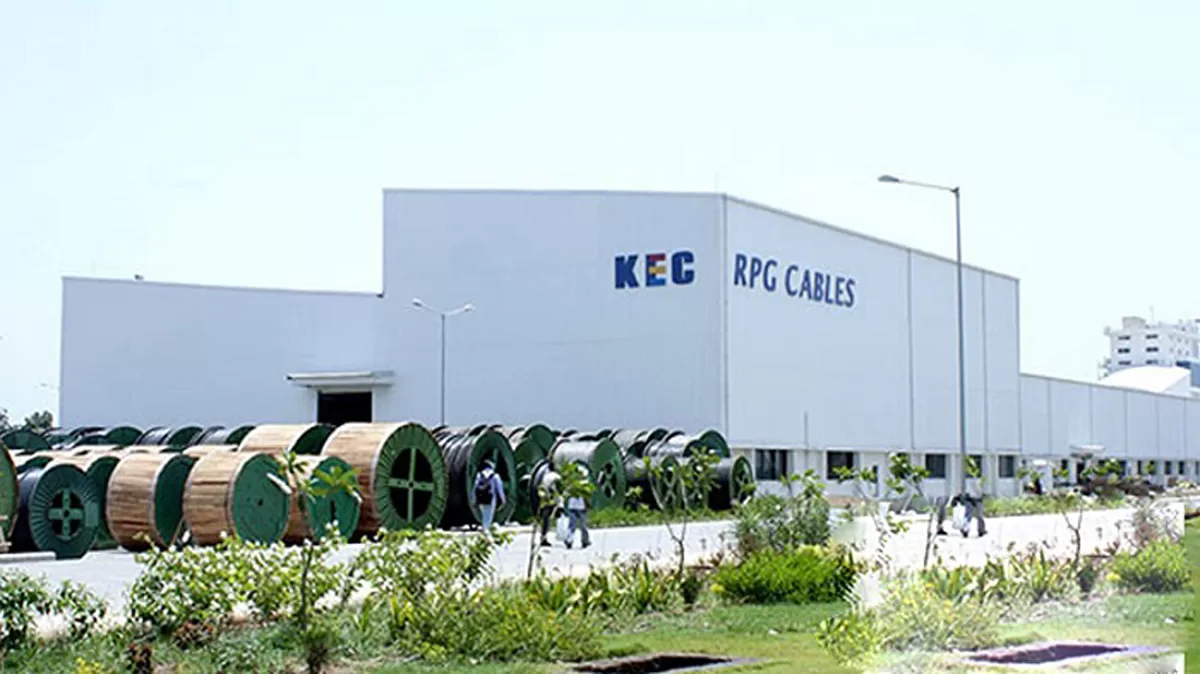- Home
- Infrastructure Transport
- ROADS & HIGHWAYS
- Driving towards a Better Tomorrow

Driving towards a Better Tomorrow
When the CW team recently met Minister of Road Transport and Highways Nitin Gadkari, he candidly stated: ´In the past year, the Ministry of Road Transport and Highways has drastically brought down stress project count to 41 from 384 projects worth Rs 3.80 lakh crore. To address the right-of-way issue, we have the hybrid mode. And, we are in the process of scrutinising around 101 projects where we are going to secure funds worth over Rs 70,000 crore.´
Back in May 2014, when the incumbent government took over, the heady pace of road construction of a decade ago had considerably slowed down. Stretched finances, delayed implementation and low traffic volumes, especially for BOT toll projects, plagued the sector.
Key projects were stuck for want of possession of land or finance or environmental clearances. Few players were bidding for the few projects on offer. Fortunately, corrective action started soon thereafter.
EPC to the rescue, but for how long?
To get the wheels of road construction moving again, one of the early focus areas of the government has been project structuring. A large number of highway projects based on the EPC model came up for bidding and, now, the industry will also see more bidding activity for projects based on a new hybrid annuity model.
The first of these initiatives has boded well, especially for companies that count EPC projects as their core business. ´We bagged 10 EPC projects last year and look forward to bidding for more EPC and BOT projects, especially EPC projects, as construction is our core business,´ says Vinod Agarwal, Managing Director, GR Infra. ´We have successfully implemented three BOT projects. Although BOT is not our model of choice; it became the trend before the sector came under severe financial stress as a whole.´ However, some consultants, developers and investors see the rolling out of EPC projects simply as a stopgap arrangement to get things moving again in the light of low appetite for BOT projects.
Schemes the government has announced so far can bring only short-term relief and resolve 10 per cent of the problems, says Rohit Chandak, CFO, Uniquest Infra Ventures Pvt Ltd, a foreign investor with an interest in the Indian roads sector. ´Contractors awarded EPC projects receive 10-15 per cent of the project cost as a mobilisation advance,´ he says. ´This means a lot, especially to EPC contractors on the verge of closing their business and to those facing a serious cash crunch with the tight bank loan situation. It is not as if awardees stand to earn huge profit margins from EPC projects.´
And VV Viswanadh, Director, Vax Consultants Pvt Ltd, says, ´EPC projects awarded recently are yet to be completed; only time will tell if the model is best suited to the Indian need.
In its present structure, the EPC model demands the involvement of too many players: The nodal authority, contractor, consultant, pre-award consultant, site engineer representing the government, and so on, who are quick to pass the buck among each other if something goes wrong.´
Hybrid model to fill a lacuna
It is highly unlikely that government coffers are deep enough to meet the cost of constructing the road length that the country needs, which EPC projects would entail. To address this lacuna, the government has come up with a new project structure: The hybrid annuity model. But it´s early days; the jury is still out on the suitability of the new design for India.
´With EPC projects, the government has assumed both the project finance and revenue (traffic) risks, and given EPC contractors a chance to play to their strengths,´ says Yogesh Kumar Jain, Managing Director, PNC Infratech Ltd. ´With hybrid annuity model projects, the government will partially take on the project finance risk and the entire revenue risk.´
´The new hybrid annuity model seems an attractive proposition,´ says Brij Mohan Reddy, Vice Chairman, Gayatri Projects. ´Limiting our equity participation to 60 per cent would limit our risk and ease cash flows. The new hybrid annuity model is a major improvement over the earlier annuity model. We did not see much upside in the erstwhile annuity model.´
However, Agarwal says, ´We´re wary about the new hybrid annuity model. While it is being positioned as a solution to turn around a dull sector, we need more clarity on the model. A very low interest rate has been proposed on the developer´s 60 per cent share of the project cost, 3 per cent over the bank rate, which currently works out to 10.75 per cent (3+7.75), whereas we usually target 24 per cent return on equity. Also, companies awarded HAM projects must create a special purpose vehicle for delivery.´
Structuring a new era
The focus must switch back to the BOT mode for the long-term good of the sector, feels Chandak; and to rebuild the confidence of big and mid-level players in the BOT model, the government must revisit PPP contracts and have more balanced risk sharing. Pushing all risks to the private sector is not a PPP.
´We need financially viable opportunities,´ he points out. ´And for those to materialise, the government must understand the asset-based issues of developers. Unless portfolio (assets) concerns are resolved, no major investment will come. Earlier, developers looked for higher IRR on the basis of traffic projection; now, we are compelled to look at annuity and hybrid mode project models where our downside is protected. We are not in a mood to take on a 20-year risk for traffic projection.´
So, how might the BOT model be tweaked for future success?
´Making the BOT project award process more transparent and instituting new checks and balances would help whet the appetite of foreign investors and attract investment in roads,´ opines Viswanadh.
It will take some fine-tuning to get the right formula, agrees Maharashtra Chief Minister Devendra Fadnavis. ´Ultimately, what the roads sector requires is private investment,´ he says. ´So, the aim should be to bring maximum private investment in the ailing sector. But to get these investments, the state has to experiment with various suitable mechanisms.´
Weeding out non-serious players from future bidding would also help. ´Genuine players like us have suffered higher project cost, operational losses and delays because of issues beyond our control, such as low traffic growth or delay in getting the right of way, while non-serious developers have shown inflated project cost, incorrect traffic numbers and taken advantage of corporate debt restructuring,´ shares Chandak. He advocates project-based solutions to overcome funding and land acquisition challenges of ongoing projects and other issues of operational projects, even if this is time-consuming. ´Establish four to five solutions and then undertake a standardised process to apply these solutions to solve similar problems in all the projects,´ he recommends.
Now, the way out is the way in
Other key government steps to spur the roads sector on the financial and execution fronts include introducing one-time funding and one-time extension if the project gets delayed owing to government authorities, and permitting companies to completely divest their equity in BOT projects, after two years of completing construction, irrespective of the year of award. Permitting divestment is expected to serve the dual purposes of spurring new investment and allowing companies to take on projects best suited to their core strengths.
´Allowing 100 per cent divestment will help developers unlock equity from their existing operational projects, and make fresh investments in new projects,´ says Jain. ´As developers as well as contractors, our exposure has been to both BOT and EPC projects,´ says Reddy. ´However, our experience has led us to believe that we are better off exiting a project once it achieves a completion certificate. With the new 100 per cent exit clause, developers like us who want to focus on development can sequestrate projects that have completed two years of toll collection. We will definitely look to exit a few of our BOT projects to improve our cash flow.´
Repairing projects
Improved communication between the National Highways Authority of India (NHAI) and developers and some innovative thinking has helped some stuck projects to get off the ground.
´Importantly, the present government is ready to experiment within the framework of the concession agreement, without it being called renegotiating,´ says Chandak. ´We appreciate faster decision-making and the assistance meted out to developers with stuck projects,´ adds Agarwal. ´Fortunately, none of our projects had stalled.´ ´We had one stuck NHAI project, a BOT (annuity) project for two-laning with paved shoulders of the 166.4-km Raebareli to Jaunpur section of NH-231, awarded to us under the NHDP IV in July 2012,´ reveals Jain. ´Construction hadn´t started even about two years after the award for want of forest clearance, which we finally got in May 2014. Construction has since been progressing well and is nearing completion.´
Bottlenecks pending resolution
While much has been done, more is needed.
For instance, Uniquest is still waiting for a solution for a 120-km roads project in Gujarat. ´Our project in Gujarat has been stuck for the past five years for want of right of way for a 20-km stretch,´ laments Chandak. ´We have been receiving a partial COD (commercial operation date) and are collecting partial toll, which is not helpful. Those 20 km fall in the middle of the project, which impacts traffic severely. We have already suffered 20 per cent cost escalation because of delays on part of the government. We´ve invested Rs 1,000 crore in constructing 100 km. How we are going to recover our investments? To make matters worse, there are massive toll violations and there is no support from the state administration at all. We have represented at various levels for help but there is no support from the Gujarat Government. If this is the situation in a progressive state like Gujarat, we are afraid to think of doing business in any other state.´
Meanwhile, APCO Infratech continues to suffer because of the slow execution of two projects of a private developer that it is implementing on an item rate basis. ´Both projects are progressing slowly because of land acquisition problems and the paucity of funds with the client; financial closure has not happened because of low viability of the projects, which are BOT projects,´ explains Anil Kumar Singh, Managing Director, APCO Infratech Pvt Ltd. ´A new clause proposes to fix the appointed date of projects only after handing over at least 80 per cent of the length of the project and limiting the scope to land acquired by the authority till 180 days from the appointed date. This will safeguard projects against languishing. We expect encumbrance-free project land, i.e. land acquisition, environment clearance and forest clearance, before entering the project site to minimise the risk of time or cost overruns.´
Accurately implementing this clause and instituting compensation to concessionaires for PPP project delays beyond their control would go a long way in creating enthusiasm. ´Interest in road construction projects would surely increase if the government obtains all the rights of way prior to tendering and award,´ opines Dinesh Jain, Executive Director, ABL Infrastructure Pvt Ltd.
O&M: New opportunities
On a positive note, over time, India has developed a huge inventory of publicly funded and completed road projects. The general industry perception is that these completed projects will create huge operations and maintenance (O&M) opportunities. ´We see good scope in the O&M space; especially with the launch of the Toll-Operate-Transfer (TOT) O&M format for roads developed with public funds,´ believes Jain. ´TOT is expected to help monetise assets upfront and generate funds for the development of new assets. Apparently, 104 projects of an aggregate length of 6,036 km have already been identified.´
PNC Infratech is already implementing one O&M project: The operation and maintenance of 217 km on the Kanpur-Lucknow section, Lucknow Bypass and Lucknow-Ayodhya section, on OMT basis.
Contractors implementing ongoing EPC projects will be responsible for their maintenance initially, but eventually those will also present maintenance opportunities. ´EPC contractors used to be responsible for maintaining the road for two years,´ says Agarwal. ´Now that time period has been increased to four years, which is still reasonable. Our stand is that construction companies must focus on quality, then maintenance is less of a burden.´
As developers gain experience of the different model concessionaire agreements and some decide to focus on development instead of the gamut of development and O&M, Reddy believes some players might want to evolve as specialist road operations-cum-toll-collection and maintenance companies.
Meanwhile, some developers will take a call not to enter the O&M segment. ´O&M does not offer voluminous work and is more labour-oriented,´ says APCO´s Singh. ´We do not see many opportunities in O&M as it is not our core function.´
Allied to O&M is the road service sector. Companies like Feedback Brisa Highways OMT are still few in number but offer niche operations and maintenance services to companies implementing Operate Manage Transfer (OMT) and TOT projects. ´With the revival of the road infrastructure segment, we´re seeing traction in the road service sector as well,´ says Premjit Singh, Managing Director, Feedback Brisa Highways OMT Ltd. ´Many OMT and TOT opportunities are arising for new and extended multiple lane projects built under the EPC model and for some stuck projects, and some of these bidders prefer to outsource O&M to specialist companies with a deep-rooted and overarching understanding of the government´s and private developer´s perspectives as well as road users´ expectations and behaviour. Specialists like us understand demographics and traffic better, and offer transparency and compliance with labour laws and superior quality service delivery standards. O&M opportunities are also arising for state highways and roads, projects we will definitely look out for.´
With a lot to go round, there´ll hopefully be something for everyone.
Quick Bytes
One of the early focus areas of the government has been project structuring.
MoRTH brought down stress project count to 41 from 384 projects.
Industry to see more bidding activity for projects based on a new hybrid annuity model.
Contractors awarded EPC projects receive 10-15 per cent of project cost as a mobilisation advance.
Obstacles that need to be resolved
- EPC projects awarded recently are yet to be completed and demands the involvement of too many players.
- Current stress project count at 41; needs to be brought down further.
- More clarity needed on the hybrid annuity model.
- Portfolio (assets) concerns need to be resolved for major investments to come in.
- Need for more private investment in the roads sector.
- Need to weed out non-serious players from future bidding.
- Project delays due to environment and forest clearances.
- Massive toll violations and lack of support from state administrations.
- Issues related to land acquisition and paucity of funds.
- Contractors not preferring projects under the Pradhan Mantri Gram Sadak Yojna as they are small sized and have scattered works.
Opportunities in Jharkhand
Jharkhand Chief Minister Raghubar Das outlines plans for road development in the state: ´Jharkhand has plans to grow its national highway network from 2,661 km to 4,200 km, for which the Centre has committed substantial funds. Certainly, this will increase the demand for cement and steel. Jharkhand will infuse Rs 900 crore to develop a 72-km highway on NH-33 and NH-6 in East Singhbhum, bordering West Bengal. It is also developing the Mahulia-Baharagora highway, a 40-km project. Overall, the state is working on detailed project reports worth Rs 30,000 crore.´
What´s in the offing in Andhra Pradesh?
From the desk of Andhra Pradesh Chief Minister N Chandrababu Naidu: ´We plan to connect Amravati with Hyderabad and Bengaluru through eight lane roads, outer ring roads and express highways.
We are working on a new concept of land pooling for infrastructure development. We have acquired around 33,000 acre, of which we will allocate a substantial amount for roads projects in the state. The Centre is taking up road projects worth more than Rs 50,000 crore in Andhra Pradesh, including an Outer Ring Road at Vijayawada, where the new capital city is coming up. We are already working on projects worth Rs 15,000 crore. So, all in all, Andhra Pradesh stands to receive Rs 65,000 crore from the Centre (for roads).´
Maharashtra´s maha road plans
Radheshyam Mopalwar, Managing Director, Maharashtra State Road Development Corporation, unveils his plans for 2016: ´Maharashtra is thinking big on roads. Even as most of our projects in hand will take another two to three years for completion provided everything progresses smoothly, we are looking to unroll a slew of new projects. Our most ambitious project is the Nagpur Mumbai Super Communication Expressway, an 800-km stretch that will cut down travel time between the two cities to six to eight hours, and provide the state´s economy a major boost. It will mark the country´s longest expressway, far surpassing the 165-km Yamuna Expressway, and entail an investment of Rs 40,000 crore, including Rs 10,000 crore for land acquisition. Other projects we look to unroll in 2016 are:
- Fifteen-km capacity augmentation of the Mumbai-Pune Expressway at Rs 3,500 crore.
- Elevated and widened 21 km Bhiwandi-Kalyan-Shilphata Road at Rs 2,100 crore.
- Four-laning of the 41 km Wakan Pali Khopoli road at Rs 500 crore.
- Two-km Thane Creek Bridge No. III at Rs 800 crore.
- Four-km elevated Thane Ghodbunder Road at 800 crore.
- One hundred and one-km and 75-km East and West (respectively) Pune Ring Road at Rs 8,000 crore.
In 2016, we aim to complete the pre-tender activities for all of these projects, including the preparation of the DPRs, feasibility studies, and obtaining various NOCs and approvals including environment and forest clearances. We also aim at awarding six of these works in one of PPP or BOT or EPC modes as per the respective feasibility study.´
´All this will be made possible because the Centre has given us an assurance of investing Rs 3 lakh crore in infrastructure development in the state over the next three years,´ says Maharashtra Chief Minister Devendra Fadnavis. ´The Centre, with the help of the Maharashtra Government, will complete roads projects worth Rs 68,000 crore by December 2016. Meanwhile, the Centre will also increase the length of National Highways in the state from 7,000 km to 22,000 km. We have also undertaken a big roads construction plan under annuity basis along with rural roads projects under Chief Minister Gramin Sadak Yojna worth around Rs 3,000-3,500 crore.´
Platefuls of projects to bid for
Opportunities are coming up for road construction companies, both within and outside the ambit of the NHAI.
Projects other than NHAI highways: ´Other (than NHAI) projects we are keenly following for active participation are state highways, expressways, peripheral roads, ring roads and city road improvement projects, of which many are in different pre-implementation stages,´ says Yogesh Kumar Jain, Managing Director, PNC Infratech Ltd.
Pradhan Mantri Gram Sadak Yojna (PMGSY) projects: ´Well-structured rural road projects under the PMGSY are up for contractors with an order book exceeding Rs 25 crore and meeting other norms,´ says Dinesh Jain, Executive Director, ABL Infrastructure Pvt Ltd. Rural road projects are genuinely well-designed and would require minimum maintenance, provided they are implemented accordingly. A lot depends on the local authorities for quality control, says Jain. In practice, however, larger contractors aren´t keen on rural roads. ´We´ve not exposed ourselves to smaller projects falling under the PMGSY and such because our strategy is to pursue projects worth Rs 500 crore and above,´ shares Brij Mohan Reddy, Vice Chairman, Gayatri Projects. ´GR Infra has executed a number of projects under the PMGSY in the past; we´ve graduated to larger projects since,´ says Vinod Agarwal, Managing Director, GR Infra. ´We are not interested in PMGSY projects because of their small size and scattered works,´ says Anil Kumar Singh, Managing Director, APCO Infratech Pvt Ltd.
Border road openings: Previously, the Ministry of Defence was assigning projects to the Border Roads Organisation (BRO), for which funds were then released from the Ministry of Road Transport and Highways. Working inefficiencies led to massive delays in 73 strategic road projects on the India-China border, cleared as far back as June 2006. Of late, the BRO has been brought under the Ministry of Defence for the faster implementation of roads in strategic border areas. The government has also eased environment norms for border road projects to speed up implementation. Around 6,000-7,000 km of non-sensitive roads in border areas will be handed over to NHAI for development, including roads in the Northeast and Jammu and Kashmir, especially Ladakh.
Breaks in the Northeast: National Highways, state roads and strategic roads in the Northeast aggregating 10,141 km are proposed to be constructed under the Special Accelerated Road Development Programme for North East (SARDP-NE). ´Of this length, the government has approved 6,418 km for execution under Phase´A´ and Arunachal Pradesh for Roads and Highways of SARDP-NE,´ according to an official source in the Ministry of Road Transport & Highways. ´DPRs will be prepared for the remaining length under Phase´B´ of the SARDP-NE.´ An additional length of about 3,750 km, comprising newly declared National Highways, and 1,500-odd km under consideration for declaration as National Highways, are targeted for development to two-lane standard in the next couple of years at an estimated cost of about Rs 10 crore per km. In the ongoing fiscal, a length of 264 km has been awarded at about Rs 4,021 crore while about 1,600 km is proposed to be awarded next year.
Lesson from Karnataka: Scientifically developed state roads policies help avoid execution delays
KS Krishna Reddy, Managing Director, Karnataka Road Development Corporation Ltd, explains the importance of scientific studies as a sound foundation for the roads policy of a state: ´In 2005, we embarked on an exercise to base our decisions on road projects on scientific data and hard facts. We conducted a prefeasibility study to evaluate several potential roads projects so that future projects don´t get stalled on technical grounds. We screened roads to prioritise stretches needing to be upgraded based on their contribution to industry, agriculture, mining, etc. States must invest in projects with the most socioeconomic impact. We also identified high traffic roads that can be developed on priority through PPP or EPC mode. Based on these studies, we developed a new road policy for Karnataka. Of Karnataka´s extensive 2.25-lakh km of motorable roads, we identified 9,830 km that aren´t built to the highest standards but need upgrade to boost economic growth. Since 2012, we have upgraded 3,200 km of these stretches. We propose to award projects to upgrade the remaining 6,000 km over the next three years, for which the government has allocated Rs 12,000 crore. In FY17, our spending on roads projects will almost double over the current year to Rs 500 crore (most of which will be spent on land acquisition). Our new online monitoring system, WEBRIS, will ensure we stay on top of these ambitious targets.´
(Additional inputs from RAHUL KAMAT)
To share your views on the growth of the roads sector, write in at feedback@ConstructionWorld.in
- Nitin Gadkari
- Road Transport
- Highways
- EPC
- Vinod Agarwal
- GR Infra
- Rohit Chandak
- Uniquest Infra Ventures Pvt Ltd
- VV Viswanadh
- Vax Consultants Pvt Ltd
- Yogesh Kumar Jain
- PNC Infratech Ltd
- Brij Mohan Reddy
- Gayatri Projects
- PPP
- Devendra Fadnavis
- BOT projects
- NHAI
- APCO Infratech
- Anil Kumar Singh
- Dinesh Jain
- ABL Infrastructure Pvt Ltd.
- TOT
- Premjit Singh
- MoRTH
- N Chandrababu Naidu,
While some recovery is underway in the roads sector, the general industry consensus is that the government needs to do more to speed up the process. When the CW team recently met Minister of Road Transport and Highways Nitin Gadkari, he candidly stated: ´In the past year, the Ministry of Road Transport and Highways has drastically brought down stress project count to 41 from 384 projects worth Rs 3.80 lakh crore. To address the right-of-way issue, we have the hybrid mode. And, we are in the process of scrutinising around 101 projects where we are going to secure funds worth over Rs 70,000 crore.´ Back in May 2014, when the incumbent government took over, the heady pace of road construction of a decade ago had considerably slowed down. Stretched finances, delayed implementation and low traffic volumes, especially for BOT toll projects, plagued the sector. Key projects were stuck for want of possession of land or finance or environmental clearances. Few players were bidding for the few projects on offer. Fortunately, corrective action started soon thereafter. EPC to the rescue, but for how long? To get the wheels of road construction moving again, one of the early focus areas of the government has been project structuring. A large number of highway projects based on the EPC model came up for bidding and, now, the industry will also see more bidding activity for projects based on a new hybrid annuity model. The first of these initiatives has boded well, especially for companies that count EPC projects as their core business. ´We bagged 10 EPC projects last year and look forward to bidding for more EPC and BOT projects, especially EPC projects, as construction is our core business,´ says Vinod Agarwal, Managing Director, GR Infra. ´We have successfully implemented three BOT projects. Although BOT is not our model of choice; it became the trend before the sector came under severe financial stress as a whole.´ However, some consultants, developers and investors see the rolling out of EPC projects simply as a stopgap arrangement to get things moving again in the light of low appetite for BOT projects. Schemes the government has announced so far can bring only short-term relief and resolve 10 per cent of the problems, says Rohit Chandak, CFO, Uniquest Infra Ventures Pvt Ltd, a foreign investor with an interest in the Indian roads sector. ´Contractors awarded EPC projects receive 10-15 per cent of the project cost as a mobilisation advance,´ he says. ´This means a lot, especially to EPC contractors on the verge of closing their business and to those facing a serious cash crunch with the tight bank loan situation. It is not as if awardees stand to earn huge profit margins from EPC projects.´ And VV Viswanadh, Director, Vax Consultants Pvt Ltd, says, ´EPC projects awarded recently are yet to be completed; only time will tell if the model is best suited to the Indian need. In its present structure, the EPC model demands the involvement of too many players: The nodal authority, contractor, consultant, pre-award consultant, site engineer representing the government, and so on, who are quick to pass the buck among each other if something goes wrong.´ Hybrid model to fill a lacuna It is highly unlikely that government coffers are deep enough to meet the cost of constructing the road length that the country needs, which EPC projects would entail. To address this lacuna, the government has come up with a new project structure: The hybrid annuity model. But it´s early days; the jury is still out on the suitability of the new design for India. ´With EPC projects, the government has assumed both the project finance and revenue (traffic) risks, and given EPC contractors a chance to play to their strengths,´ says Yogesh Kumar Jain, Managing Director, PNC Infratech Ltd. ´With hybrid annuity model projects, the government will partially take on the project finance risk and the entire revenue risk.´ ´The new hybrid annuity model seems an attractive proposition,´ says Brij Mohan Reddy, Vice Chairman, Gayatri Projects. ´Limiting our equity participation to 60 per cent would limit our risk and ease cash flows. The new hybrid annuity model is a major improvement over the earlier annuity model. We did not see much upside in the erstwhile annuity model.´ However, Agarwal says, ´We´re wary about the new hybrid annuity model. While it is being positioned as a solution to turn around a dull sector, we need more clarity on the model. A very low interest rate has been proposed on the developer´s 60 per cent share of the project cost, 3 per cent over the bank rate, which currently works out to 10.75 per cent (3+7.75), whereas we usually target 24 per cent return on equity. Also, companies awarded HAM projects must create a special purpose vehicle for delivery.´ Structuring a new era The focus must switch back to the BOT mode for the long-term good of the sector, feels Chandak; and to rebuild the confidence of big and mid-level players in the BOT model, the government must revisit PPP contracts and have more balanced risk sharing. Pushing all risks to the private sector is not a PPP. ´We need financially viable opportunities,´ he points out. ´And for those to materialise, the government must understand the asset-based issues of developers. Unless portfolio (assets) concerns are resolved, no major investment will come. Earlier, developers looked for higher IRR on the basis of traffic projection; now, we are compelled to look at annuity and hybrid mode project models where our downside is protected. We are not in a mood to take on a 20-year risk for traffic projection.´ So, how might the BOT model be tweaked for future success? ´Making the BOT project award process more transparent and instituting new checks and balances would help whet the appetite of foreign investors and attract investment in roads,´ opines Viswanadh. It will take some fine-tuning to get the right formula, agrees Maharashtra Chief Minister Devendra Fadnavis. ´Ultimately, what the roads sector requires is private investment,´ he says. ´So, the aim should be to bring maximum private investment in the ailing sector. But to get these investments, the state has to experiment with various suitable mechanisms.´ Weeding out non-serious players from future bidding would also help. ´Genuine players like us have suffered higher project cost, operational losses and delays because of issues beyond our control, such as low traffic growth or delay in getting the right of way, while non-serious developers have shown inflated project cost, incorrect traffic numbers and taken advantage of corporate debt restructuring,´ shares Chandak. He advocates project-based solutions to overcome funding and land acquisition challenges of ongoing projects and other issues of operational projects, even if this is time-consuming. ´Establish four to five solutions and then undertake a standardised process to apply these solutions to solve similar problems in all the projects,´ he recommends. Now, the way out is the way in Other key government steps to spur the roads sector on the financial and execution fronts include introducing one-time funding and one-time extension if the project gets delayed owing to government authorities, and permitting companies to completely divest their equity in BOT projects, after two years of completing construction, irrespective of the year of award. Permitting divestment is expected to serve the dual purposes of spurring new investment and allowing companies to take on projects best suited to their core strengths. ´Allowing 100 per cent divestment will help developers unlock equity from their existing operational projects, and make fresh investments in new projects,´ says Jain. ´As developers as well as contractors, our exposure has been to both BOT and EPC projects,´ says Reddy. ´However, our experience has led us to believe that we are better off exiting a project once it achieves a completion certificate. With the new 100 per cent exit clause, developers like us who want to focus on development can sequestrate projects that have completed two years of toll collection. We will definitely look to exit a few of our BOT projects to improve our cash flow.´ Repairing projects Improved communication between the National Highways Authority of India (NHAI) and developers and some innovative thinking has helped some stuck projects to get off the ground. ´Importantly, the present government is ready to experiment within the framework of the concession agreement, without it being called renegotiating,´ says Chandak. ´We appreciate faster decision-making and the assistance meted out to developers with stuck projects,´ adds Agarwal. ´Fortunately, none of our projects had stalled.´ ´We had one stuck NHAI project, a BOT (annuity) project for two-laning with paved shoulders of the 166.4-km Raebareli to Jaunpur section of NH-231, awarded to us under the NHDP IV in July 2012,´ reveals Jain. ´Construction hadn´t started even about two years after the award for want of forest clearance, which we finally got in May 2014. Construction has since been progressing well and is nearing completion.´ Bottlenecks pending resolution While much has been done, more is needed. For instance, Uniquest is still waiting for a solution for a 120-km roads project in Gujarat. ´Our project in Gujarat has been stuck for the past five years for want of right of way for a 20-km stretch,´ laments Chandak. ´We have been receiving a partial COD (commercial operation date) and are collecting partial toll, which is not helpful. Those 20 km fall in the middle of the project, which impacts traffic severely. We have already suffered 20 per cent cost escalation because of delays on part of the government. We´ve invested Rs 1,000 crore in constructing 100 km. How we are going to recover our investments? To make matters worse, there are massive toll violations and there is no support from the state administration at all. We have represented at various levels for help but there is no support from the Gujarat Government. If this is the situation in a progressive state like Gujarat, we are afraid to think of doing business in any other state.´ Meanwhile, APCO Infratech continues to suffer because of the slow execution of two projects of a private developer that it is implementing on an item rate basis. ´Both projects are progressing slowly because of land acquisition problems and the paucity of funds with the client; financial closure has not happened because of low viability of the projects, which are BOT projects,´ explains Anil Kumar Singh, Managing Director, APCO Infratech Pvt Ltd. ´A new clause proposes to fix the appointed date of projects only after handing over at least 80 per cent of the length of the project and limiting the scope to land acquired by the authority till 180 days from the appointed date. This will safeguard projects against languishing. We expect encumbrance-free project land, i.e. land acquisition, environment clearance and forest clearance, before entering the project site to minimise the risk of time or cost overruns.´ Accurately implementing this clause and instituting compensation to concessionaires for PPP project delays beyond their control would go a long way in creating enthusiasm. ´Interest in road construction projects would surely increase if the government obtains all the rights of way prior to tendering and award,´ opines Dinesh Jain, Executive Director, ABL Infrastructure Pvt Ltd. O&M: New opportunities On a positive note, over time, India has developed a huge inventory of publicly funded and completed road projects. The general industry perception is that these completed projects will create huge operations and maintenance (O&M) opportunities. ´We see good scope in the O&M space; especially with the launch of the Toll-Operate-Transfer (TOT) O&M format for roads developed with public funds,´ believes Jain. ´TOT is expected to help monetise assets upfront and generate funds for the development of new assets. Apparently, 104 projects of an aggregate length of 6,036 km have already been identified.´ PNC Infratech is already implementing one O&M project: The operation and maintenance of 217 km on the Kanpur-Lucknow section, Lucknow Bypass and Lucknow-Ayodhya section, on OMT basis. Contractors implementing ongoing EPC projects will be responsible for their maintenance initially, but eventually those will also present maintenance opportunities. ´EPC contractors used to be responsible for maintaining the road for two years,´ says Agarwal. ´Now that time period has been increased to four years, which is still reasonable. Our stand is that construction companies must focus on quality, then maintenance is less of a burden.´ As developers gain experience of the different model concessionaire agreements and some decide to focus on development instead of the gamut of development and O&M, Reddy believes some players might want to evolve as specialist road operations-cum-toll-collection and maintenance companies. Meanwhile, some developers will take a call not to enter the O&M segment. ´O&M does not offer voluminous work and is more labour-oriented,´ says APCO´s Singh. ´We do not see many opportunities in O&M as it is not our core function.´ Allied to O&M is the road service sector. Companies like Feedback Brisa Highways OMT are still few in number but offer niche operations and maintenance services to companies implementing Operate Manage Transfer (OMT) and TOT projects. ´With the revival of the road infrastructure segment, we´re seeing traction in the road service sector as well,´ says Premjit Singh, Managing Director, Feedback Brisa Highways OMT Ltd. ´Many OMT and TOT opportunities are arising for new and extended multiple lane projects built under the EPC model and for some stuck projects, and some of these bidders prefer to outsource O&M to specialist companies with a deep-rooted and overarching understanding of the government´s and private developer´s perspectives as well as road users´ expectations and behaviour. Specialists like us understand demographics and traffic better, and offer transparency and compliance with labour laws and superior quality service delivery standards. O&M opportunities are also arising for state highways and roads, projects we will definitely look out for.´ With a lot to go round, there´ll hopefully be something for everyone. Quick Bytes One of the early focus areas of the government has been project structuring. MoRTH brought down stress project count to 41 from 384 projects. Industry to see more bidding activity for projects based on a new hybrid annuity model. Contractors awarded EPC projects receive 10-15 per cent of project cost as a mobilisation advance. Obstacles that need to be resolved EPC projects awarded recently are yet to be completed and demands the involvement of too many players. Current stress project count at 41; needs to be brought down further. More clarity needed on the hybrid annuity model. Portfolio (assets) concerns need to be resolved for major investments to come in. Need for more private investment in the roads sector. Need to weed out non-serious players from future bidding. Project delays due to environment and forest clearances. Massive toll violations and lack of support from state administrations. Issues related to land acquisition and paucity of funds. Contractors not preferring projects under the Pradhan Mantri Gram Sadak Yojna as they are small sized and have scattered works. Opportunities in Jharkhand Jharkhand Chief Minister Raghubar Das outlines plans for road development in the state: ´Jharkhand has plans to grow its national highway network from 2,661 km to 4,200 km, for which the Centre has committed substantial funds. Certainly, this will increase the demand for cement and steel. Jharkhand will infuse Rs 900 crore to develop a 72-km highway on NH-33 and NH-6 in East Singhbhum, bordering West Bengal. It is also developing the Mahulia-Baharagora highway, a 40-km project. Overall, the state is working on detailed project reports worth Rs 30,000 crore.´ What´s in the offing in Andhra Pradesh? From the desk of Andhra Pradesh Chief Minister N Chandrababu Naidu: ´We plan to connect Amravati with Hyderabad and Bengaluru through eight lane roads, outer ring roads and express highways. We are working on a new concept of land pooling for infrastructure development. We have acquired around 33,000 acre, of which we will allocate a substantial amount for roads projects in the state. The Centre is taking up road projects worth more than Rs 50,000 crore in Andhra Pradesh, including an Outer Ring Road at Vijayawada, where the new capital city is coming up. We are already working on projects worth Rs 15,000 crore. So, all in all, Andhra Pradesh stands to receive Rs 65,000 crore from the Centre (for roads).´ Maharashtra´s maha road plans Radheshyam Mopalwar, Managing Director, Maharashtra State Road Development Corporation, unveils his plans for 2016: ´Maharashtra is thinking big on roads. Even as most of our projects in hand will take another two to three years for completion provided everything progresses smoothly, we are looking to unroll a slew of new projects. Our most ambitious project is the Nagpur Mumbai Super Communication Expressway, an 800-km stretch that will cut down travel time between the two cities to six to eight hours, and provide the state´s economy a major boost. It will mark the country´s longest expressway, far surpassing the 165-km Yamuna Expressway, and entail an investment of Rs 40,000 crore, including Rs 10,000 crore for land acquisition. Other projects we look to unroll in 2016 are: Fifteen-km capacity augmentation of the Mumbai-Pune Expressway at Rs 3,500 crore. Elevated and widened 21 km Bhiwandi-Kalyan-Shilphata Road at Rs 2,100 crore. Four-laning of the 41 km Wakan Pali Khopoli road at Rs 500 crore. Two-km Thane Creek Bridge No. III at Rs 800 crore. Four-km elevated Thane Ghodbunder Road at 800 crore. One hundred and one-km and 75-km East and West (respectively) Pune Ring Road at Rs 8,000 crore. In 2016, we aim to complete the pre-tender activities for all of these projects, including the preparation of the DPRs, feasibility studies, and obtaining various NOCs and approvals including environment and forest clearances. We also aim at awarding six of these works in one of PPP or BOT or EPC modes as per the respective feasibility study.´ ´All this will be made possible because the Centre has given us an assurance of investing Rs 3 lakh crore in infrastructure development in the state over the next three years,´ says Maharashtra Chief Minister Devendra Fadnavis. ´The Centre, with the help of the Maharashtra Government, will complete roads projects worth Rs 68,000 crore by December 2016. Meanwhile, the Centre will also increase the length of National Highways in the state from 7,000 km to 22,000 km. We have also undertaken a big roads construction plan under annuity basis along with rural roads projects under Chief Minister Gramin Sadak Yojna worth around Rs 3,000-3,500 crore.´ Platefuls of projects to bid for Opportunities are coming up for road construction companies, both within and outside the ambit of the NHAI. Projects other than NHAI highways: ´Other (than NHAI) projects we are keenly following for active participation are state highways, expressways, peripheral roads, ring roads and city road improvement projects, of which many are in different pre-implementation stages,´ says Yogesh Kumar Jain, Managing Director, PNC Infratech Ltd. Pradhan Mantri Gram Sadak Yojna (PMGSY) projects: ´Well-structured rural road projects under the PMGSY are up for contractors with an order book exceeding Rs 25 crore and meeting other norms,´ says Dinesh Jain, Executive Director, ABL Infrastructure Pvt Ltd. Rural road projects are genuinely well-designed and would require minimum maintenance, provided they are implemented accordingly. A lot depends on the local authorities for quality control, says Jain. In practice, however, larger contractors aren´t keen on rural roads. ´We´ve not exposed ourselves to smaller projects falling under the PMGSY and such because our strategy is to pursue projects worth Rs 500 crore and above,´ shares Brij Mohan Reddy, Vice Chairman, Gayatri Projects. ´GR Infra has executed a number of projects under the PMGSY in the past; we´ve graduated to larger projects since,´ says Vinod Agarwal, Managing Director, GR Infra. ´We are not interested in PMGSY projects because of their small size and scattered works,´ says Anil Kumar Singh, Managing Director, APCO Infratech Pvt Ltd. Border road openings: Previously, the Ministry of Defence was assigning projects to the Border Roads Organisation (BRO), for which funds were then released from the Ministry of Road Transport and Highways. Working inefficiencies led to massive delays in 73 strategic road projects on the India-China border, cleared as far back as June 2006. Of late, the BRO has been brought under the Ministry of Defence for the faster implementation of roads in strategic border areas. The government has also eased environment norms for border road projects to speed up implementation. Around 6,000-7,000 km of non-sensitive roads in border areas will be handed over to NHAI for development, including roads in the Northeast and Jammu and Kashmir, especially Ladakh. Breaks in the Northeast: National Highways, state roads and strategic roads in the Northeast aggregating 10,141 km are proposed to be constructed under the Special Accelerated Road Development Programme for North East (SARDP-NE). ´Of this length, the government has approved 6,418 km for execution under Phase´A´ and Arunachal Pradesh for Roads and Highways of SARDP-NE,´ according to an official source in the Ministry of Road Transport & Highways. ´DPRs will be prepared for the remaining length under Phase´B´ of the SARDP-NE.´ An additional length of about 3,750 km, comprising newly declared National Highways, and 1,500-odd km under consideration for declaration as National Highways, are targeted for development to two-lane standard in the next couple of years at an estimated cost of about Rs 10 crore per km. In the ongoing fiscal, a length of 264 km has been awarded at about Rs 4,021 crore while about 1,600 km is proposed to be awarded next year. Lesson from Karnataka: Scientifically developed state roads policies help avoid execution delays KS Krishna Reddy, Managing Director, Karnataka Road Development Corporation Ltd, explains the importance of scientific studies as a sound foundation for the roads policy of a state: ´In 2005, we embarked on an exercise to base our decisions on road projects on scientific data and hard facts. We conducted a prefeasibility study to evaluate several potential roads projects so that future projects don´t get stalled on technical grounds. We screened roads to prioritise stretches needing to be upgraded based on their contribution to industry, agriculture, mining, etc. States must invest in projects with the most socioeconomic impact. We also identified high traffic roads that can be developed on priority through PPP or EPC mode. Based on these studies, we developed a new road policy for Karnataka. Of Karnataka´s extensive 2.25-lakh km of motorable roads, we identified 9,830 km that aren´t built to the highest standards but need upgrade to boost economic growth. Since 2012, we have upgraded 3,200 km of these stretches. We propose to award projects to upgrade the remaining 6,000 km over the next three years, for which the government has allocated Rs 12,000 crore. In FY17, our spending on roads projects will almost double over the current year to Rs 500 crore (most of which will be spent on land acquisition). Our new online monitoring system, WEBRIS, will ensure we stay on top of these ambitious targets.´ (Additional inputs from RAHUL KAMAT) To share your views on the growth of the roads sector, write in at feedback@ConstructionWorld.in

KEC International bags Rs 10.34 billion in new orders
"KEC International Ltd, a global infrastructure EPC major and part of the RPG Group, has secured new orders worth Rs 10.34 billion across its Transmission & Distribution (T&D), Civil, and Cables businesses. In the T&D segment, the company has received its first-ever STATCOM project from a global OEM in India, along with orders for the supply of towers, hardware, and poles in the Americas. The civil business has marked a key milestone by entering the semiconductor space, bagging a contract to establish a semiconductor plant for a major private player. It has also won a repeat order ..

Viva launches 3D louvres for next-gen façade design
Viva, Asia’s largest manufacturer of aluminium composite panels (ACP), has introduced its advanced 3D louvres, offering a blend of architectural innovation and practical performance. Designed to enhance the aesthetics and efficiency of building facades, these louvres aim to set a new benchmark for the industry.The newly launched 3D louvres are engineered to add visual depth and dynamic appeal to both residential and commercial structures. Combining durability, ease of installation, and low maintenance, the product is tailored for contemporary design needs.“The 3D louvre range is a natural ..

JustDeliveries raises Rs 5.5 crore to expand intracity cold chain network
JustDeliveries, a cold chain logistics startup focused on mid-mile solutions for India’s food and beverage sector, has raised Rs 5.5 crore in a funding round co-led by VC Grid and NABVentures. Other participants included LetsVenture, Anay Ventures, and FAAD Network.This fresh round brings the total capital raised by the startup to US$ 2 million (approximately Rs 15.9 crore). The funds will be used to strengthen its technology platform and expand operations to three more cities, including Lucknow and Chennai. JustDeliveries currently operates in Bangalore, Delhi, Hyderabad, Mumbai, and Pune.F..
Latest Updates
Advertisement
Recommended for you
Advertisement
Subscribe to Our Newsletter
Get daily newsletters around different themes from Construction world.
Advertisement
Advertisement
Advertisement
subscribe to the newsletter
Don't miss out on valuable insights and opportunities
to connect with like minded professionals














